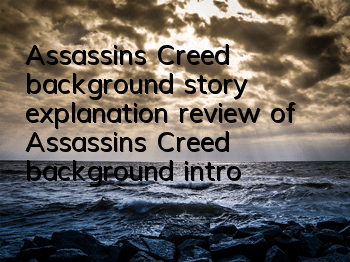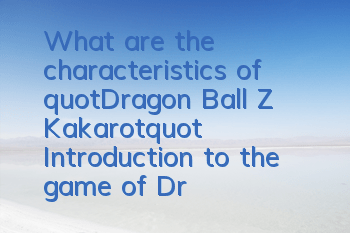As the last work of the Egio trilogy in the Assassin's Creed series, the outstanding performance of "Apocalypse" is also deeply loved by old players. Especially compared with the Assassin's Creed series, which has now entered the new generation, this old work from 11 years ago is even more classic and full of assassin flavor. The protagonist of the Revelation has not changed, and he is still our favorite legendary assassin master Egio. The difference is that compared to the young Egio in Assassin's Creed 2 and the middle-aged Egio in the Brotherhood, we will experience the story of the old Egio in the Revelation. Next, let’s review the classic work of Assassin’s Creed: Revelation.
The story stage of the Apocalypse goes out of Italy, no longer Rome, nor back to Florence, nor Venice. The story stage this time is set in the ancient and diverse Istanbul, namely Constantinople. Unlike the Italian style, both the characters' clothing and architectural style are full of strong oriental style.
The picture level of this work has improved significantly compared to Brothers. Whether it is the delicateness and solidity of the objects, you can feel a certain improvement. What I love the most is the light and shadow expression of the book of Revelation. The book of Revelation presents Constantinople like oil paintings worth stopping and enjoying. The soft and gorgeous presentation of time makes Istanbul full of romantic feelings.
The main storyline follows the core elements of this series, leading the assassins to fight against the Templars, treasure hunting golden apples, and always fight for those who are treated unequally. Therefore, most of the time players spend in the game, they crawl east and west, and then they kill the Templars and kill those who hold power. Although the game mainline is the same and the gameplay is similar, of course it must be innovative as a continuation work. So, is there any innovation in the book of Revelation? The answer is yes, and Revelation strengthens these elements under the old framework.
In the book of Revelation, in addition to the original long weapons, short weapons, hive swords, short muskets, flying knives, etc., Egio also made a new weapon "Hook Claw". During combat, hook and sleeve sword are one, but in normal times, hook claws can allow you to climb higher and safer, and can also allow you to use the ropes on the roof for quick movement. The killing action was originally a very exciting part of Assassin's Creed. It was basically a pleasure to watch Egio kill the enemy, and the action presentation in the Apocalypse became more exciting and gorgeous. Especially the newly added hook claws can be said to be very impressive, which makes me feel very painful just by looking at them. Moreover, the system of shaking people and fighting in the Brotherhood has been fully retained in the Apocalypse.
Not only that, the entire guild system in the fraternity was also preserved intact. In the Brotherhood, Egio can assassins from the guild to perform missions in various parts of Italy, and he can still do this in the Book of Revelation. The difference is that the cities in this work that can perform missions are all over the Mediterranean. It also introduced the territory control system. Although Egio cannot go to these cities to fight against the Templars, he can assassins to perform missions in various places, weakening the power of the Templars in the area., and then seize control of the city, and then assassins are assigned to the target city for long-term garrison.
Next, let’s talk about the combat system of this game. If you want to talk about the most important new element of the combat system, it is probably the newly imported "bomb" system. There are various bomb-making materials everywhere in Constantinople, through which Egio can make various bombs to help the battle proceed. The functions of bombs are all kinds of strange. In addition to the range size, some bombs explode immediately if they are lost, while others have to wait for a few seconds before they explode. Some are fragmented bombs with direct lethality, some are poisonous gas bombs that release poison gas, and some are blood fog bombs that do not have lethality to scare the enemy, noise bombs that mislead the enemy, etc. What function bombs can be made in the end are determined by what materials Egio uses during the manufacturing process.
A design similar to siege war also appears in the book of Apocalypse. If the player's "Templar alertness" is too high and it is not immediately eliminated, the Templar may attack your stronghold in the city. At this time, Egio had to rush to the attacked stronghold and launch a "stronghold offensive and defensive battle" with the Templars.
Eggio cannot move in the offensive and defensive battles at the stronghold, but he can use morale value to buy various items for defense. Whether it is a roadblock, crossbowman, musketeer, air striker, etc., you must purchase by consuming morale value. If you kill the enemy in defense, you will get morale value. Egio himself can also use muskets to attack, and the Templars attacked by Egio will also be listed as priority targets by other assassins, while Egio's own musket attack does not require morale consumption. In addition, Egio can also mark the location to carry out "bombardment". Bombardment is usually used to fight against the Templar siege weapons, which does not require morale consumption, but there is a CD.
In addition, most of the assassin skills have been retained, whether it is mixing into the crowd, stealing, etc. The super powerful plug-in "Hawkeye" has greatly improved its importance in the Apocalypse. Moreover, this game has added a new "achievement" element to the game. The difference from the past is that it is no longer just recorded in your account, but will actually affect the efficiency of the objects and various skills you can use in the game.
Let’s talk about the puzzle part. Assassin’s Creed puzzle is nothing more than crawling around and opening the machine to find ways to reach the destination. Solving puzzles in the body really accounts for a large part of the game, and jumping to the end made me feel a little bored. However, I personally think the puzzle-solving ratio of Apocalypse is quite good. The appropriate amount of puzzle-solving elements are interspersed during the game, making the game structure richer and more refreshing to play. I personally think the ratio between battle and puzzle solving in the Apocalypse is great. It will not make the game elements too single and boring, and the puzzle solving will not be too overwhelming. After all, this is still an action game. With the more powerful picture presentation of the Apocalypse, it is really enjoyable to solve the puzzle. butThe taste of these ridiculous scenes in the book of Revelation reminds me of another series of magical works "Secret Realm Expeditions". I have to say that it feels a bit similar.
Let’s talk about the plot part. In the Ontology and the Brotherhood, Egio has obtained the Pope's Golden Apple. Now Egio travels across the ocean to Constantinople in the East. One of the purposes is to open the legendary Altaïr's library and find a golden apple that Altaïr once owned. Of course, the Templars are still responsible for playing the villain.
We talked at the beginning, and Egio is really getting more handsome as he gets older. Therefore, even though Egio is old, the emotional world is still rich and colorful, which is really envious. What’s more special is that by buying "Altay’s Key", players can experience Altay’s story again. The relationship between Altayle and Golden Apple is presented in the concentrated essence version, and it also briefly describes the legendary story of Altayle's life from the age of 20 to 80. I personally think that the choreography of Altaïr by Revelation is great. The proportion is not that much that it can steal Egio's limelight, but it allows players to roughly understand what kind of person this legendary master Altaïr is and what kind of story he has had.
In terms of the story part, there are actually no highlights, nor are there any special highlights. Basically, the story arrangement is all within expectations and reasonable. However, the rhythm of "telling stories" is well mastered, and the overall appearance is compact and there is no cold-blooded situation. The fast-paced and unremitting game presentation makes the entire single-player plot experience very comfortable and entertaining enough.
Finally, let’s summarize. There are powerful movements in the Apocalypse, which have great effects in both combat and movement jump. Although this game does not have a level setting, the impact of the equipment on the character's numerical value is somewhat similar to that of the RPG level system. Therefore, even if it is an action game, players can feel the strong role-playing elements when playing. A small number of puzzles are interspersed in the story, making the overall game rhythm of the story better. The picture has made obvious progress. Compared with the picture improvement between Brotherhood and Assassin's Creed 2, I think the picture quality improvement of the Apocalypse is more obvious.
In general, Apocalypse is indeed a very good continuation work. Even if you treat it as an independent game, it has a very high level of presentation. In terms of my personal subjective gaming experience, the simple and refreshing combat experience, an easy-to-understand but exciting operating system, a plot that has no highlights but is full of pleasure, etc. The game experience brought to me by the Apocalypse is even better than the previous work "Brothers". Even though it has been a game for 11 years, for players who like action games, Apocalypse is still a work that cannot be missed, and if you are a loyal game fan of Assassin's Creed, there is naturally no reason not to experience it.









